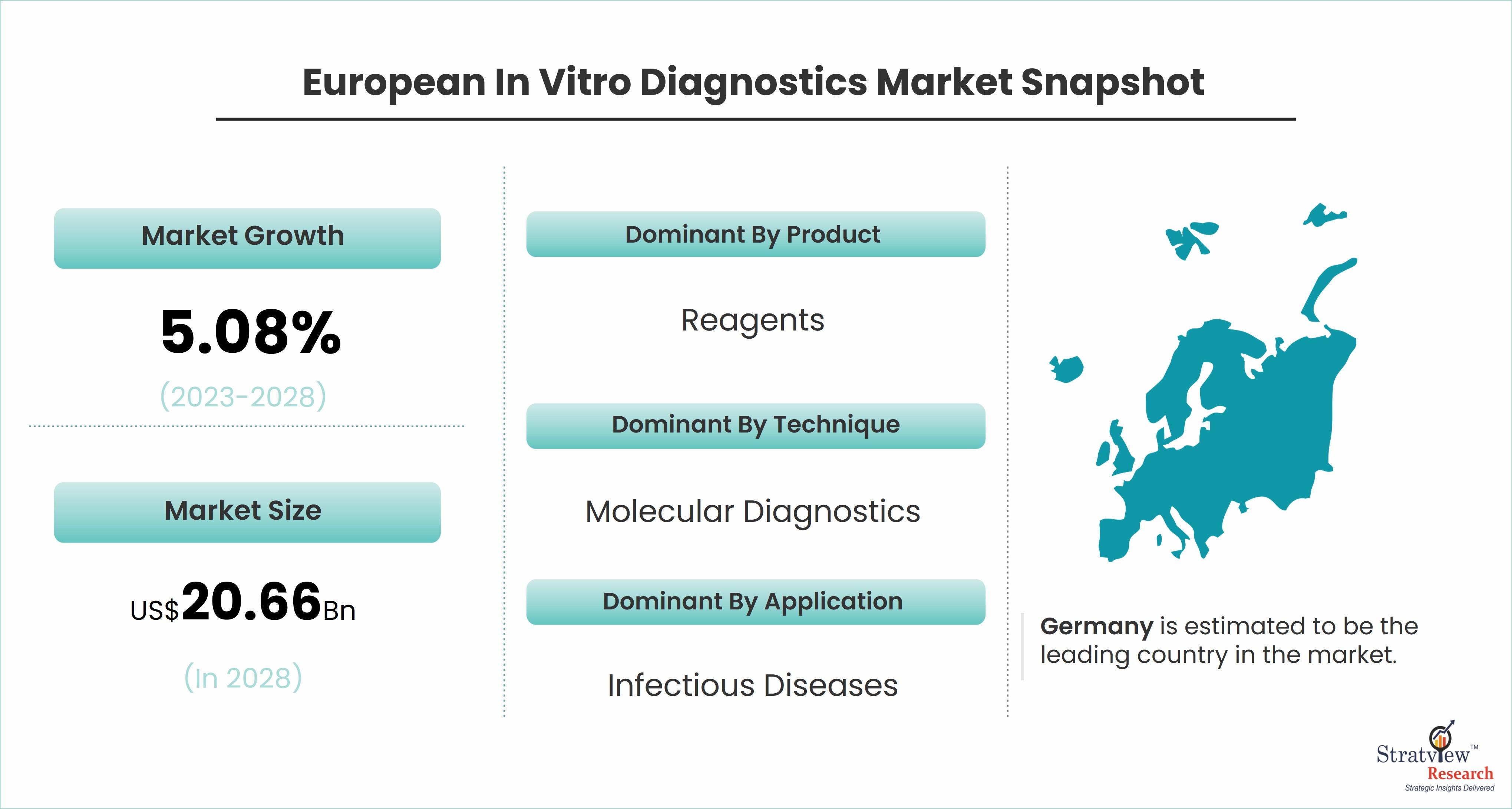According to Stratview Research, the European in vitro diagnostics market was estimated at USD 15.29 billion in 2022 and is likely to grow at a CAGR of 5.08% during 2023-2028 to reach USD 20.66 billion in 2028.
In the ever-evolving landscape of healthcare, in vitro diagnostics (IVD) stand as a cornerstone for disease detection, management, and treatment decision-making. Across Europe, the IVD landscape is characterized by innovation, collaboration, and a commitment to improving patient outcomes. In this article, we delve into the European In Vitro Diagnostics Landscape, exploring the challenges, opportunities, and advancements shaping diagnostic healthcare across the continent.
Understanding the European In Vitro Diagnostics Landscape:
The European In Vitro Diagnostics Landscape encompasses a wide array of diagnostic tests, devices, and technologies used to analyze biological specimens outside the body. These tests provide critical information to healthcare professionals for the diagnosis, monitoring, and management of diseases spanning infectious diseases, cancer, cardiovascular conditions, and more.
Breaking Down Barriers: Challenges in the European IVD Landscape:
Despite the advancements in IVD technologies, the European landscape is not without its challenges. Regulatory complexities, varying reimbursement policies across countries, and interoperability issues pose barriers to the seamless integration and adoption of diagnostic solutions. Additionally, disparities in access to healthcare services and diagnostic testing between urban and rural areas, as well as across socioeconomic strata, present challenges for equitable healthcare delivery.
Overcoming Challenges: Opportunities for Innovation and Collaboration:
Amidst these challenges, the European IVD landscape presents ample opportunities for innovation and collaboration. Regulatory harmonization efforts, such as the European Union's In Vitro Diagnostic Regulation (IVDR), aim to streamline the approval process for diagnostic devices, ensuring safety, efficacy, and patient access to innovative technologies. Furthermore, initiatives to promote data sharing, interoperability, and standardization facilitate the integration of diagnostic information into healthcare systems, enabling more personalized and efficient care delivery.
Advancements Driving Change:
Technological advancements are driving transformative changes in the European IVD landscape. Molecular diagnostics, including polymerase chain reaction (PCR) and next-generation sequencing (NGS), enable precise and rapid detection of infectious agents, genetic mutations, and biomarkers associated with various diseases. Point-of-care testing (POCT) devices empower healthcare professionals with real-time diagnostic capabilities, reducing turnaround times and enabling timely treatment decisions. Additionally, the integration of artificial intelligence (AI) and machine learning algorithms enhances diagnostic accuracy, predicts disease outcomes, and supports personalized treatment approaches.
The Role of Collaboration and Partnerships:
Collaboration between industry stakeholders, healthcare providers, regulators, and patient advocacy groups is essential for addressing the complex challenges facing the European IVD landscape. Partnerships facilitate the development of innovative diagnostic technologies, drive regulatory reforms, and promote best practices in healthcare delivery. By fostering a collaborative ecosystem, stakeholders can break down barriers, accelerate innovation, and improve patient access to high-quality diagnostic services across Europe.
Conclusion:
In conclusion, the European In Vitro Diagnostics Landscape is a dynamic and multifaceted environment, characterized by challenges, opportunities, and advancements. By breaking down barriers through innovation, collaboration, and regulatory alignment, stakeholders can overcome obstacles and drive positive change in diagnostic healthcare delivery. As we navigate the complexities of the European IVD landscape, one thing is clear: by working together, we can enhance patient outcomes, promote equity in healthcare access, and shape a healthier future for all.

